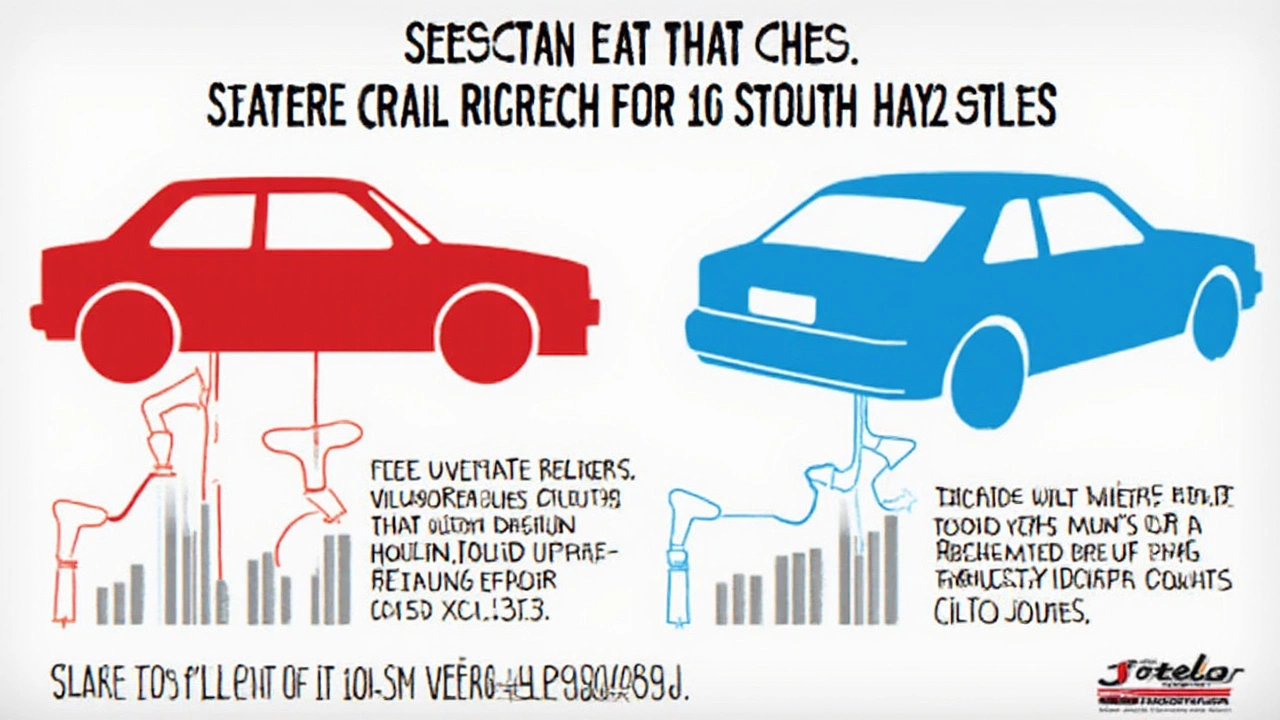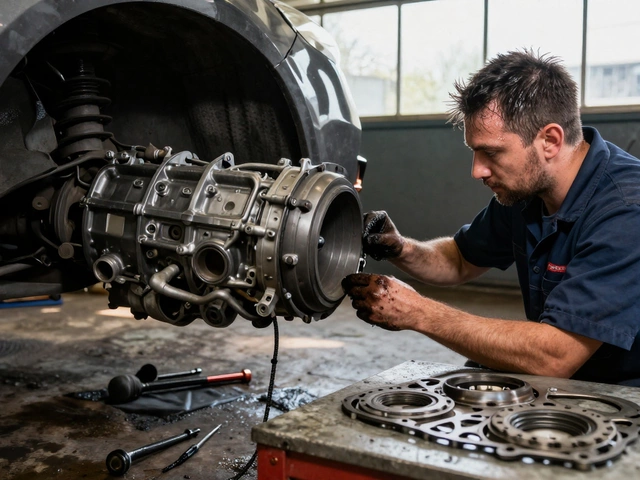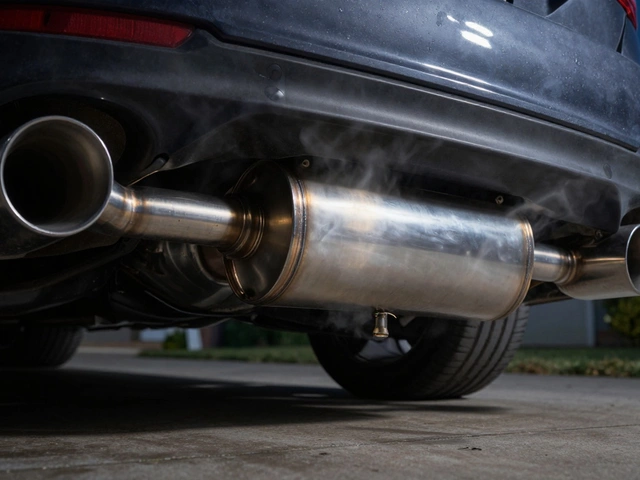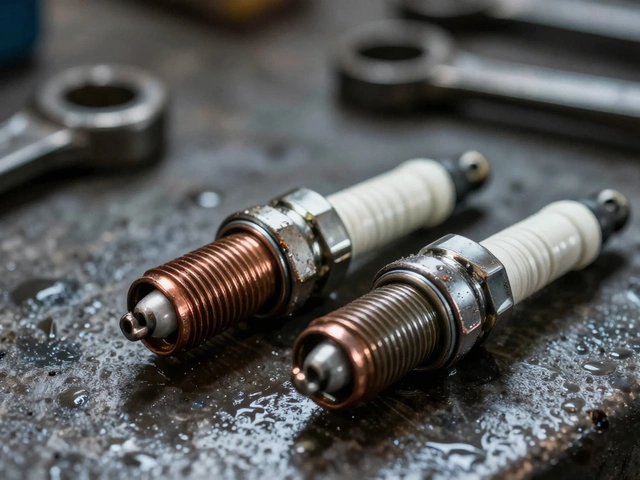Pop open any car forum and you’ll find arguments spiraling over one simple question: will a cat back exhaust actually add real, useable horsepower to your ride? Folks brag, manufacturers advertise big numbers, and yet the honest answer rarely lines up with those wild claims. For gearheads, it’s not just about the sound—it’s about what those pipes are doing under the hood. If you’re hoping to transform your daily driver into a fire-breathing beast with a cat back alone, you might want to manage your expectations. But there’s still a lot to get excited about, and the right upgrade can absolutely wake up your engine in ways that are more than just sound and style.
What a Cat Back Exhaust Really Changes
The term "cat back" gets tossed around a ton, especially in tuner circles. But what exactly is it? A cat back exhaust system replaces everything from the catalytic converter all the way to the tailpipe. That includes piping, resonators, mufflers—sometimes fancy tips if you’re lucky. The big idea is to swap out restrictive factory parts for freer-flowing ones. If you’ve ever picked up a stock muffler, you know they’re built with cost and comfort in mind, not performance. There are baffles, crimps, and strange chambers that muffle sound, which unfortunately also restrict exhaust flow. Cat back systems open things up, reducing the pressure the engine has to push against. That can mean the engine breathes easier and, in theory, produces more power.
But it’s not magic. See, most modern catalytic converters are shockingly efficient, so the real choke points in factory systems often sit before the cat—or right in the giant, lumpy mufflers. Swapping to a cat back means you’re removing back pressure the engine doesn’t want. But unless your original pipes were really choking things (think pea-shooter diameter), the changes might be subtler than you hope. It comes down to how much your particular engine needs more airflow, and how choked up your stock system is to begin with.
Before we toss HP numbers around, let’s look at what data actually says. Dyno tests (the gold standard for measuring power) consistently show gains, but not always the wild jumps marketing promises. Here’s a table of results from some well-known real-world tests:
| Car Model | Stock HP | Reported Gain (HP) | Type of Cat Back |
|---|---|---|---|
| 2016 Ford Mustang GT | 435 | +7 to +12 | Borla ATAK |
| 2010 Subaru WRX | 265 | +4 to +8 | Cobb Tuning |
| 2022 Honda Civic Si | 200 | +2 to +5 | Magnaflow Street |
| 2017 Chevrolet Camaro SS | 455 | +8 to +13 | Corsa Sport |
Look at those numbers. Most gains fall in the 2-15 horsepower range, with few exceptions. That’s with popular setups on otherwise stock cars. For engines with turbochargers, the potential bump is a bit better—turbos love less back pressure. But if you’re going NA (naturally aspirated), the leap is usually at the lower end of the scale. The big takeaway: if you see a company promising you 30, even 50 extra horses from a cat back alone, be skeptical. Real dyno runs rarely show that, unless you pair your new exhaust with headers, an intake, or a tune.
Still, it’s not all about peak horsepower. Where the cat back really shines is in the rev range—sometimes you pick up a smoother torque curve, more responsiveness, or a little earlier power under the curve. That can change the driving feel even if the top number didn’t skyrocket. And of course, we can’t forget sound. Most drivers say half the fun is how the car feels and sounds. Shedding that muffled rasp for a deep, angry tone makes the car feel faster—sometimes that’s worth more than numbers on a chart.

Power Gains: The Factors That Matter Most
Nothing kills excitement like slap-in-the-face reality, but the truth matters here. Not all cars respond equally to a cat back exhaust. Three main factors decide your results: the engine’s design, how restricted your stock setup is, and the quality—and design—of the aftermarket kit you pick. Let’s break those down.
First off, your engine. Some motors are so choked up from the factory, even a basic swap unleashes hidden ponies. Others, especially newer or more performance-focused models, come with relatively free-flowing pipes. If you drive a Toyota Corolla, don’t expect an earth-shattering change. Muscle cars on the other hand, or turbocharged sport compacts, might see more dramatic results. The bigger your engine’s appetite for air, the more an open exhaust helps.
Next: stock exhaust design. If your car runs a single, thin exhaust pipe, topped with a heavy muffler full of baffles, swapping to a larger-diameter, straighter pipe makes a difference. Systems with dual exhausts or already generous pipe sizes just won’t bottleneck as much, so gains are smaller. You need a restriction to remove, so if there isn’t one, you won’t feel much. And some factories tune exhausts for sound and emissions—meaning you can get slight performance boosts just by ditching those little tricks.
And let’s not ignore the quality of your cat back. Not all systems are equal. Brands like Borla, Magnaflow, Corsa, or Flowmaster test their setups on real dynos, tuning pipe diameters, bends, and even the way mufflers flow. Cheap kits from eBay or no-name brands? You never really know what you’re getting. A poorly designed system can actually hurt performance by causing weird turbulence or—worse—losing valuable low-end torque because it’s too big. That’s right: bigger pipes aren’t always better. On a small engine, huge diameter pipes reduce the velocity of exiting gases, killing low-rev power and sometimes even making the car slower right off the line.
Here’s a helpful tip: before you pick a kit, check the diameter recommendations for your engine size. There are online calculators, but as a rule of thumb: up to 2.5 inches for four-cylinders, up to 3 inches for V6 and small V8s, and 3 inches or more for high-HP big block motors. Ask real-world owners of your car what worked and what didn’t—forums and user reviews help separate the hype from honest results.
Finally, remember the law. Some areas have strict emissions and sound rules, and not every system is legal for road use. If you don’t want tickets—or to spend money swapping parts back—double check those details before you buy. California, for example, has some of the strictest sound and emissions rules around, and police know what to look for. Only buy parts labeled specifically as “legal” if you’re worried about passing tech or inspections.

Sound, Feel, and Cost: Is a Cat Back Worth It?
Let’s cut to the chase—is dropping a grand (or more) on a cat back exhaust really worth it? Beyond the marketing, the answer is “it depends”—but there’s more to the story than just peak HP. When you bolt one up, your car’s personality changes. Most owners aren’t just chasing HP—they want sound, looks, and a sense of connection with their car. That deep growl when you step on the gas, the way it echoes off parking garage walls, the subtle burble when you let off the throttle—it’s addicting. For some, that alone is worth the price tag.
Installation is usually straightforward, especially if you buy a well-known brand. Most cat back systems are direct-fit. You need basic hand tools, jack stands, and a couple hours. Pro tip: spray the old bolts with penetrating oil the night before. Saves your knuckles and a lot of frustration. If you don’t want to crawl around under your car, a good shop will charge an hour or two labor. Always save your stock parts—you may want to swap back or sell them if you move on to another ride.
Now let’s talk money. Depending on the brand and material, kits run from $400 for basic aluminized pipes to over $2,000 for fancy stainless steel masterpieces. Don’t pick solely on price—a $200 eBay kit might rust apart in a winter or sound terrible. Stainless holds up longer, so it pays off if you plan to keep the car. Consider whether you want loud or quiet, deep or raspy, and check for drone—some systems get unbearably loud inside at certain speeds. Read reviews, listen to YouTube clips (with headphones for a truer sound), and pick one that suits your style and daily life.
There’s one more big tip—if you pair a cat back with an intake, headers, or a tune, each adds up. The exhaust system is a part of a whole, not a one-shot miracle. With supporting mods, that 8 horsepower can double. Go turbocharged? Those numbers get spicy, fast. On NA engines, though, don’t expect miracles—think of it as a solid, incremental upgrade that adds fun factor as much as it adds power.
Hey, if you’re serious about squeezing the most potential out of your car, treat the cat back as an entry point. Later, you can go after headers, high-flow cats, custom tunes, and more. But if you just want a nice bump in sound and a few real HP, you could do much worse—just know what you’re paying for, and buy with honest expectations instead of chasing hype.








